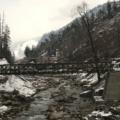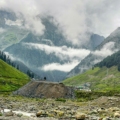Delhi To Mussoorie Road Trip: Route, How to Reach, Places to Visit & More

Travel Advisory – August 2025:
Due to recent severe flash floods and adverse weather conditions—including a significant cloudburst in Uttarkashi on August 5, 2025—travellers to Uttarakhand are advised to exercise extreme caution. Several regions, especially high-altitude areas such as Uttarkashi, have experienced substantial damage, roadblocks, and disruptions to tourism activities. Government advisories have recommended postponing non-essential travel, staying updated with weather reports, avoiding rivers and landslide-prone areas, and being prepared for sudden weather changes or evacuation orders. For your safety, please check the latest official guidance and emergency numbers before and during your visit.
For emergencies in Uttarakhand, please contact local authorities at the following helplines: 01374-222722, 7310913129, 7500737269, 0135-2710334, 2710335, 8218867005, 9058441404.
The urge to travel is ever increasing, especially if you’re living in a metropolitan city like Delhi. For many living here, running to the Himalayas, or at least the foothills, is one of the the perfect getaways with friends and family, given how close it is to the city. Among the many places to visit in North India, Mussoorie is one such hill station in India where time slows down, the air feels lighter, and every moment invites you to breathe a little deeper. And you know the best part is the journey itself. Travelling from Delhi to Mussoorie by road, air, train or bus, is not just scenic, it’s deeply refreshing. It gives you space to think, appreciate nature, and reconnect with yourself and those around you. If that sounds like your kind of trip, here’s everything you need to know about hitting the road from Delhi to Mussoorie. And if you’re still unsure, read on. You just might change your mind.
In this Blog
How to go to Mussoorie from Delhi?
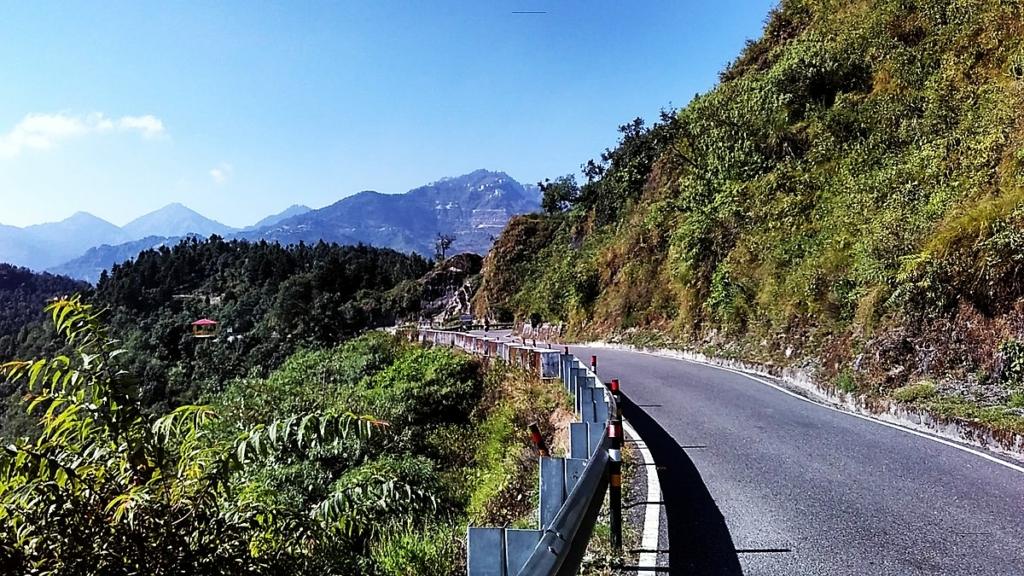
Mussoorie, located in the Garhwal Himalayas, is one of the most popular tourist spots in Uttarakhand. Reaching here from Delhi is easy as you can drive, take a bus, take a flight, or rent a car, depending on your travel style. But it’s the road trip where the magic begins. The Delhi to Mussoorie distance by car is around 296 to 340 km, depending on the route. Along the way, you’ll pass charming towns, rolling fields, and gradually, the mighty Himalayas come into view. It’s a drive that offers both adventure and calm, which is perfect for those looking to breathe a little deeper.
What is the Best Route from Delhi to Mussoorie by car?
There’s not just one but three main routes you can take when travelling from Delhi to Mussoorie by road, and each one comes with its own set of scenic highlights, highway pitstops, and time-saving hacks. The best part? With minimal traffic and an early start, you can reach Mussoorie in under 7 hours. The roads are smooth, well-marked, and perfect for a relaxed yet refreshing drive into the hills.
Route 1: Delhi – Haridwar – Rishikesh – Dehradun – Mussoorie
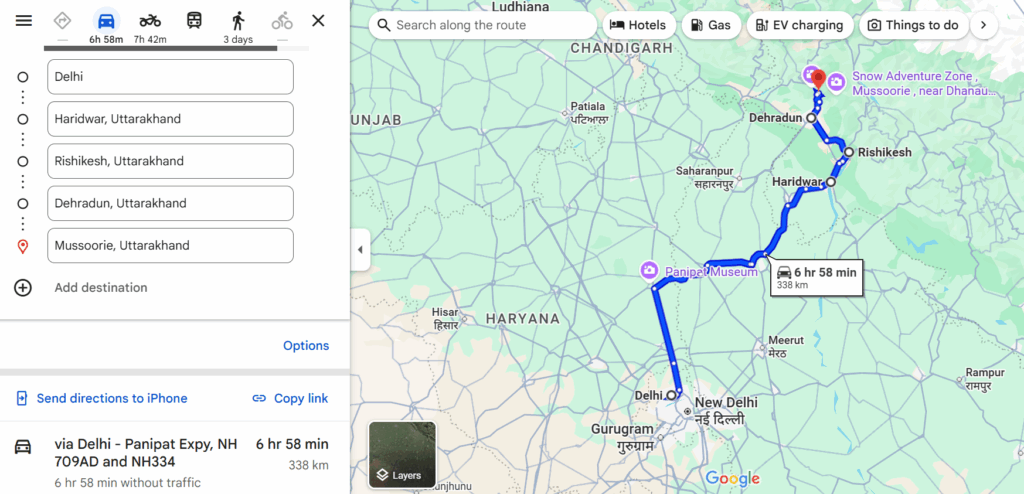
This is arguably the most scenic and soulful route from Delhi to Mussoorie by car, especially for those who enjoy blending road trips with spiritual and cultural pitstops. If you’re taking the scenic route, you’ll mostly drive along the NH 334 and later on through the NH7. You’ll start from Delhi and drive towards Haridwar, where the Ganges flows in full glory. It’s worth a stop, even if just to stretch your legs by the ghats.
From there, make your way to Rishikesh, a town that’s buzzing with yoga centres, riverside cafés, and that unmistakable mountain energy. After Rishikesh, head to Dehradun, Uttarakhand’s capital, before finally climbing up to Mussoorie, with winding roads that offer stunning views of the Garhwal Himalayas. And if you’re not in a rush and love discovering new places along the way, this Delhi to Mussoorie route is a must.
Route 2: Delhi — Meerut — Muzaffarnagar —Haridwar — Dehradun — Mussoorie

Now, if you’re looking for a route that’s a bit quicker but still want to pass through the scenic plains of Uttar Pradesh and Uttarakhand, this one’s for you. From Delhi, drive towards Meerut via the Delhi-Meerut Expressway—a newly built, wide stretch that makes the first part of your journey incredibly smooth.
Continue through Muzaffarnagar and onto Haridwar, from where the route merges with Route 1. This route saves you some time by skipping Rishikesh, but still allows you to enjoy the scenic Haridwar to Dehradun stretch, eventually leading you up to Mussoorie. This is a great pick if you want to cut down on travel time without compromising on views and comfort.
Route 3: Delhi — Sonipat — Shamli — Saharanpur — Dehradun — Mussoorie
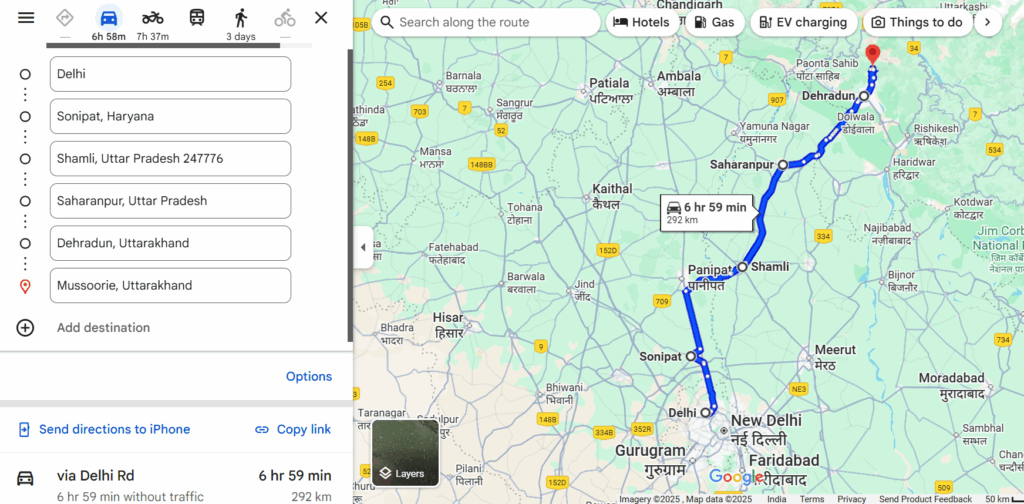
For those looking for a less crowded, more offbeat drive, this route through Sonipat, Shamli, and Saharanpur offers a peaceful countryside charm. It’s not the most popular choice, which works in your favour if you prefer quieter roads and fewer pitstops.
From Delhi, drive past Sonipat, then continue towards Shamli, a town surrounded by sugarcane fields, and on to Saharanpur, known for its woodwork and local craftsmanship. Eventually, you’ll merge onto the Dehradun highway, and from there, it’s a beautiful uphill drive to Mussoorie.
While this route may take a bit longer due to a few narrow stretches and less-developed highway zones, it’s perfect for those seeking a calm, uninterrupted journey.
Delhi to Mussoorie by Bus
If you’re a budget traveller, travelling from Delhi to Mussoorie bus is both economical and convenient. The most popular option is the Delhi to Mussoorie Volvo bus, offering comfortable seating and overnight services. The journey takes around 8 to 9 hours, depending on traffic and road conditions. Volvo bus ticket prices generally start from Rs. 700, with various options based on your budget and preferences. Buses depart from ISBT Kashmiri Gate, Sarai Kale Khan ISBT, and Majnu Ka Tila, while in Mussoorie, key stops include the Library Bus Stand and Mussoorie Bus Ticket Centre. A reliable and scenic ride without burning a hole in your pocket.
What is the Best Time to Visit Mussoorie?
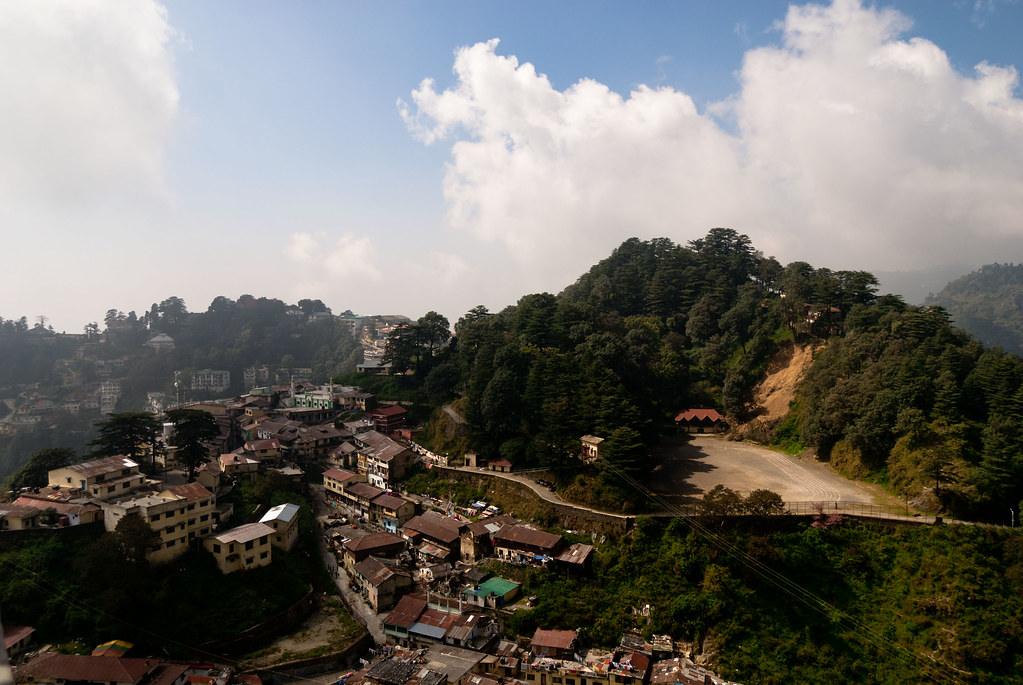
Mussoorie is truly a year-round destination, but the best time to visit Mussoorie depends entirely on the kind of experience you’re after. Summer (March to June) is ideal for a road trip to Mussoorie because the temperatures here is between 14°C and 26°C, it’s a cool, green escape from Delhi’s sweltering heat. It’s perfect for trekking, sightseeing, and outdoor adventures.
Monsoon (July to September) turns Mussoorie into a misty wonderland, with lush landscapes and waterfalls. But be cautious cause landslides and slippery roads can make travel tricky.
Winter (December to February) is magical, especially for snow lovers. With temperatures dropping to -1°C, it’s perfect for those chasing snowfall and cosy winter stays. Each season offers something special and as mentioned, Mussoorie never goes out of style.
Places to Visit while on a Delhi to Mussoorie Trip
If you’re planning a Delhi to Mussoorie road trip, you’re in for a ride filled with scenic pitstops, hill station charm, and picture-perfect moments! Here are some amazing places you must add to your itinerary that are a mix of iconic spots in Mussoorie and some gems along the way.
Mall Road
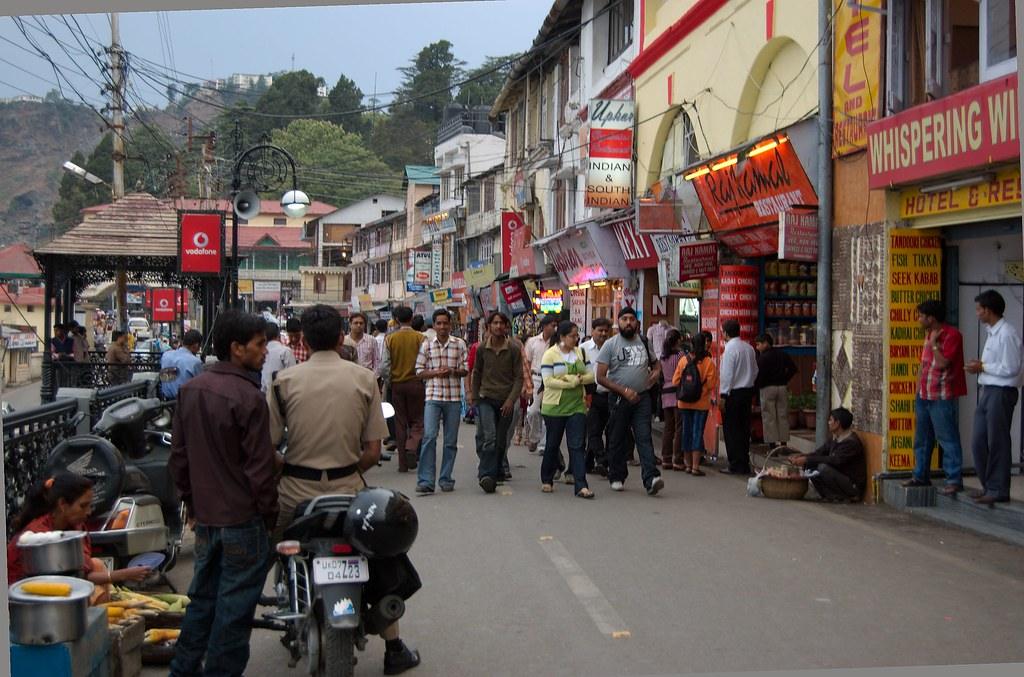
This one’s a no-brainer! The heart of Mussoorie, Mall Road is where the town buzzes with life. Lined with cafes, shops, and local vendors selling momos and souvenirs, it’s perfect for an evening stroll with views of the Doon Valley.
Kempty Falls
A classic and always a crowd-pleaser, Kempty Falls is just 13 km from Mussoorie. The cascading waters, surrounded by lush greenery, are perfect for a quick dip, some family fun, or that refreshing Instagram reel.
Gun Hill
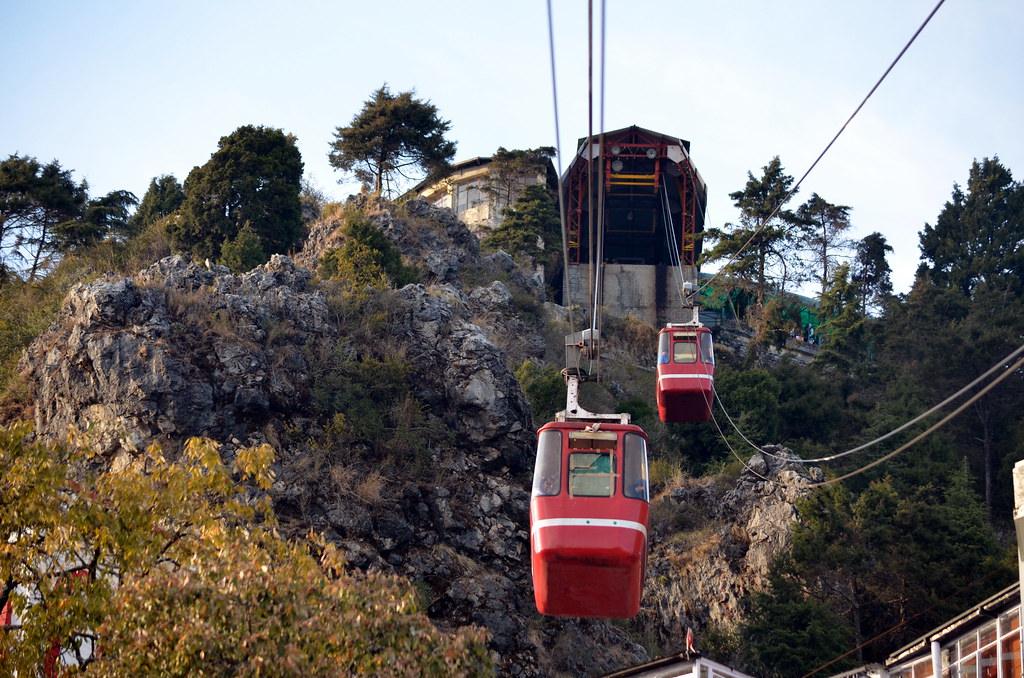
Take the ropeway or hike up to Gun Hill, the second-highest peak in Mussoorie. The panoramic views of the Himalayas are breathtaking, especially at sunset. Plus, there are fun little shops and games for kids (and adults who act like kids!).
Lal Tibba
For the best views in town, Lal Tibba is the place. Located in Landour, this spot is quiet, scenic, and absolutely soul-stirring. Get your camera ready because the views of snow-capped peaks on a clear day are simply magical.
Cloud’s End
Drive a little out of town and you’ll find yourself at Cloud’s End, literally where Mussoorie seems to end and the forest begins. Peaceful, green, and a great place for short treks or just some quality silence.
Municipal Garden
Also known as Company Garden, this one is a hit with families. It’s got pretty flower beds, fountains, a mini lake with boating, and picnic spots. A great place to relax after a day of exploring.
Dehradun
Before you climb into the hills, a pitstop at Dehradun is a must. Visit Robber’s Cave, the Forest Research Institute, or enjoy a hearty local meal. It’s the perfect blend of city and nature.
Rishikesh
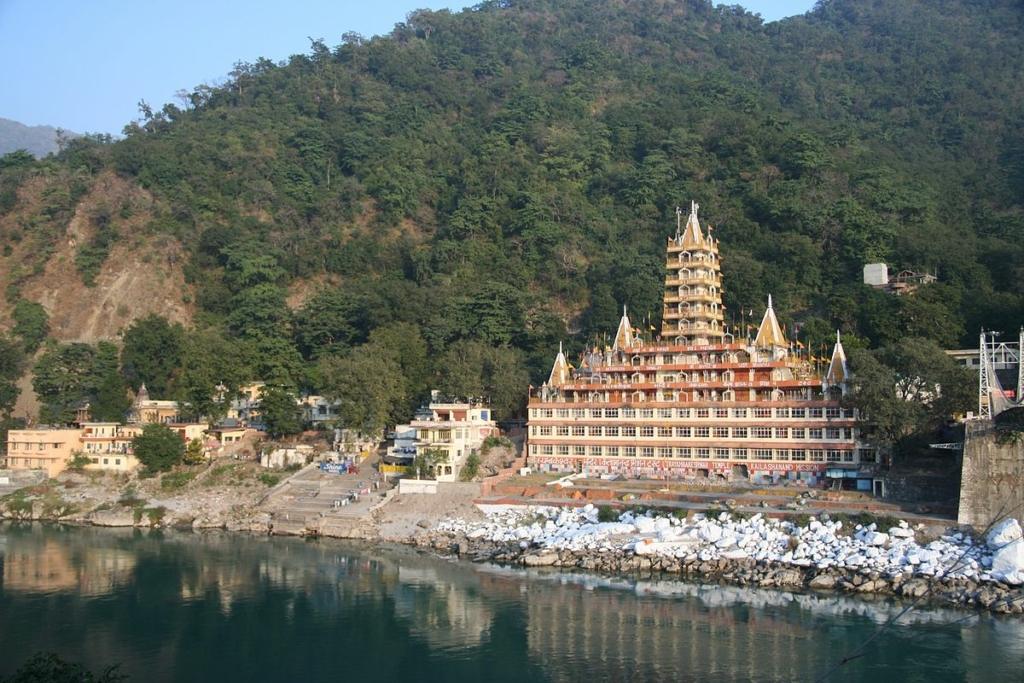
Fred Hsu via Wikimedia
On your way to Mussoorie, why not take a detour to Rishikesh and take the Route 1 from the list? Famous for yoga, river rafting, and the iconic Laxman Jhula, it’s got just the right amount of thrill and spiritual vibe to energise your trip.
Haridwar
If you’ve never experienced the Ganga Aarti, stop at Haridwar on your way. Watching thousands of diyas float along the Ganges at sunset is a moment of pure magic.
Where to stay in Mussoorie?
From cosy cottages to luxurious hilltop tents, Mussoorie offers a wide range of stays for every kind of traveller. Whether you’re here for a romantic getaway, a quiet break, or a family adventure, these stays offer the best of Mussoorie’s charm, comfort, and breathtaking views.
Everest Base Camp
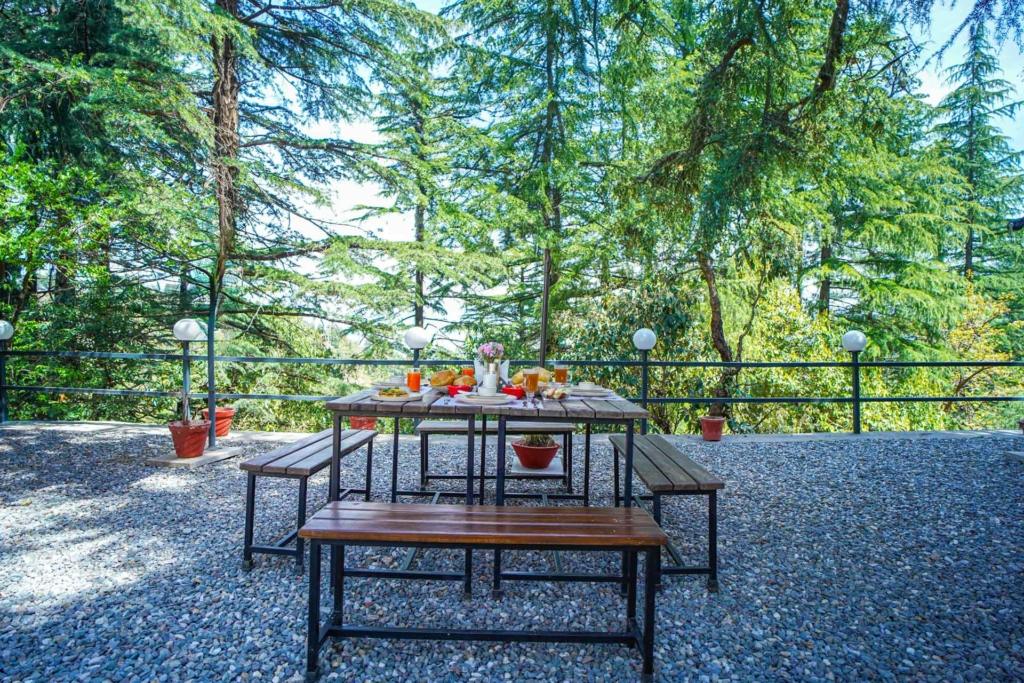
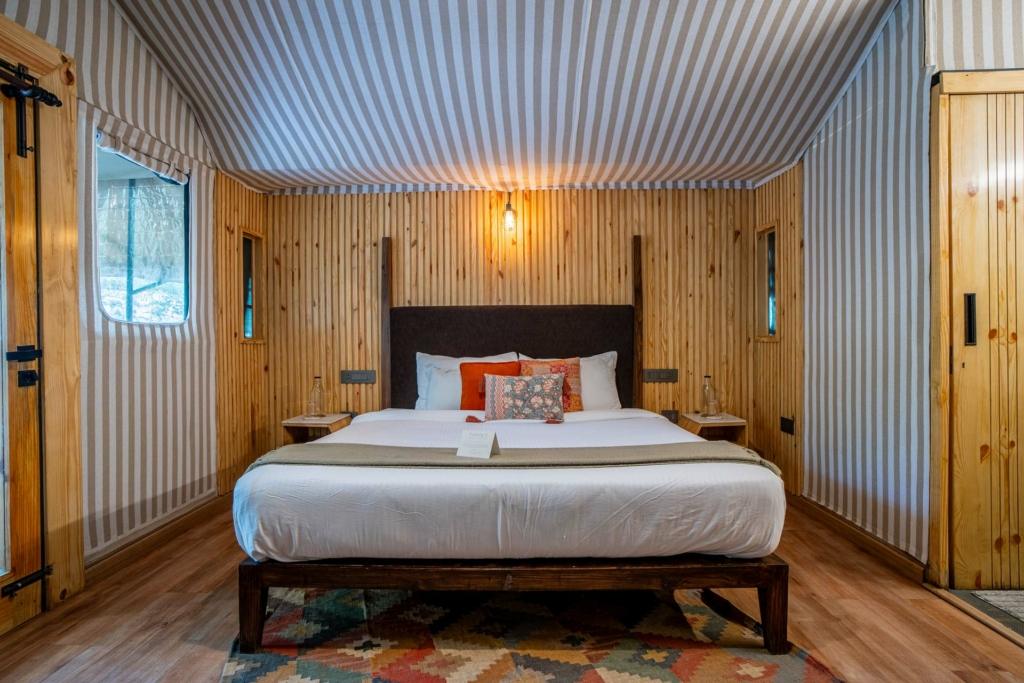
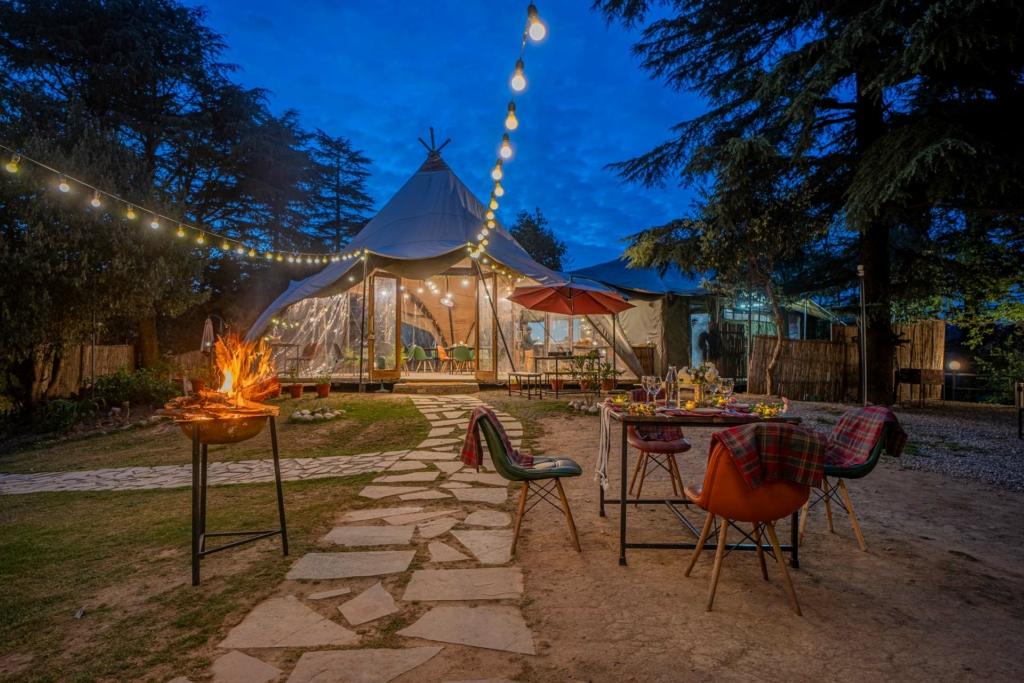
A glamping resort like no other, Everest Base Camp is spread across 20 acres of forest, near the iconic George Everest House. With 7 beautifully designed luxury tents, electric blankets, and sweeping views, this is where wilderness meets comfort. Guests also get exclusive access to gourmet picnics and the scenic George Everest grounds.
Arncliff Villa
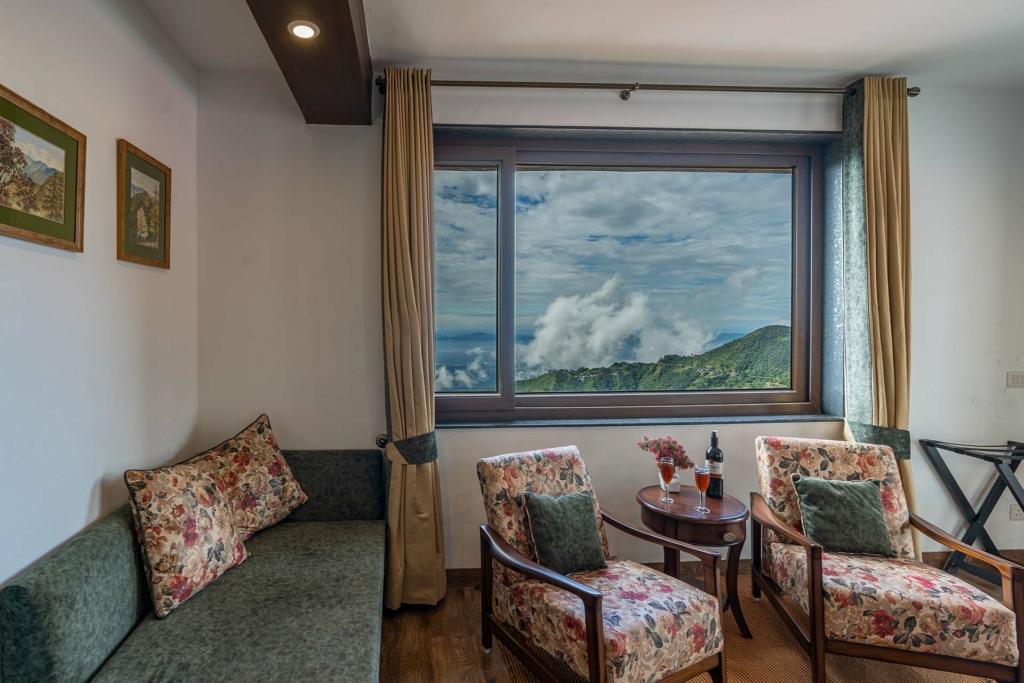
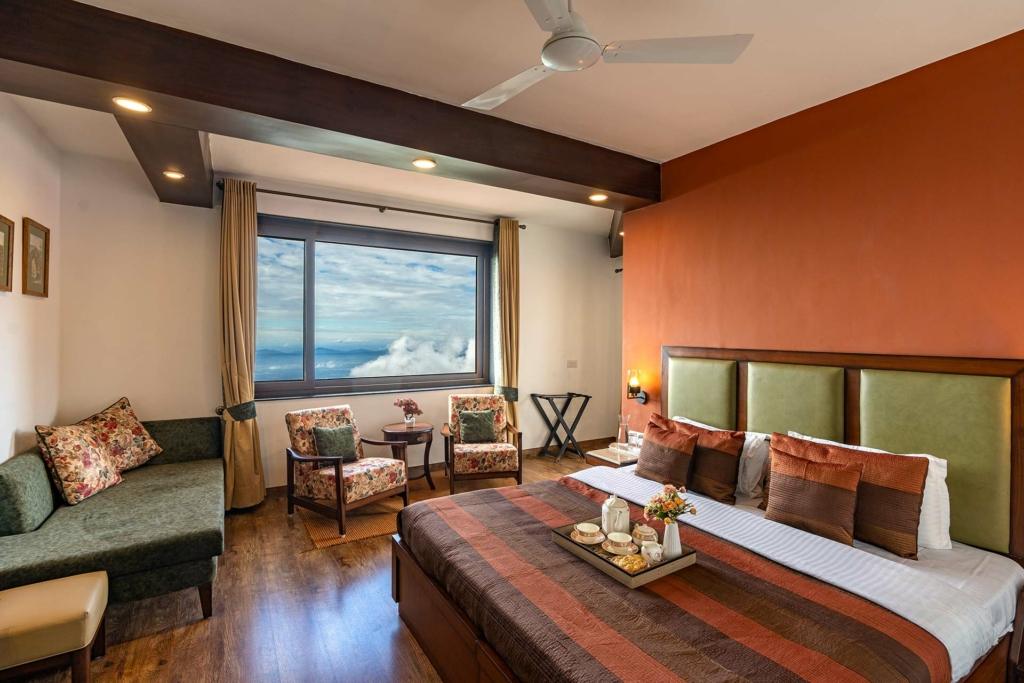
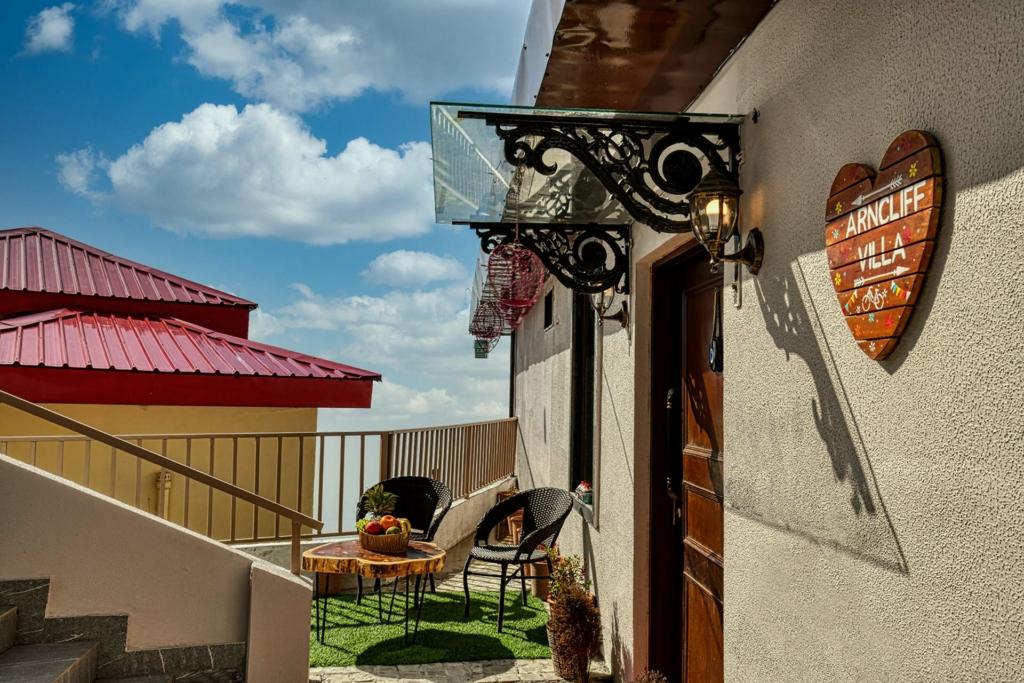
A charming home wrapped in mist and sunlight, Arncliff Villa is your window to Mussoorie’s old-world charm. Lounge on the sunny terrace, walk to Mall Road in minutes, and end your day by the bonfire with Himalayan views. Quiet corners, lush surroundings, and a magical ambience make this home hard to leave.
Vikalp Cottage
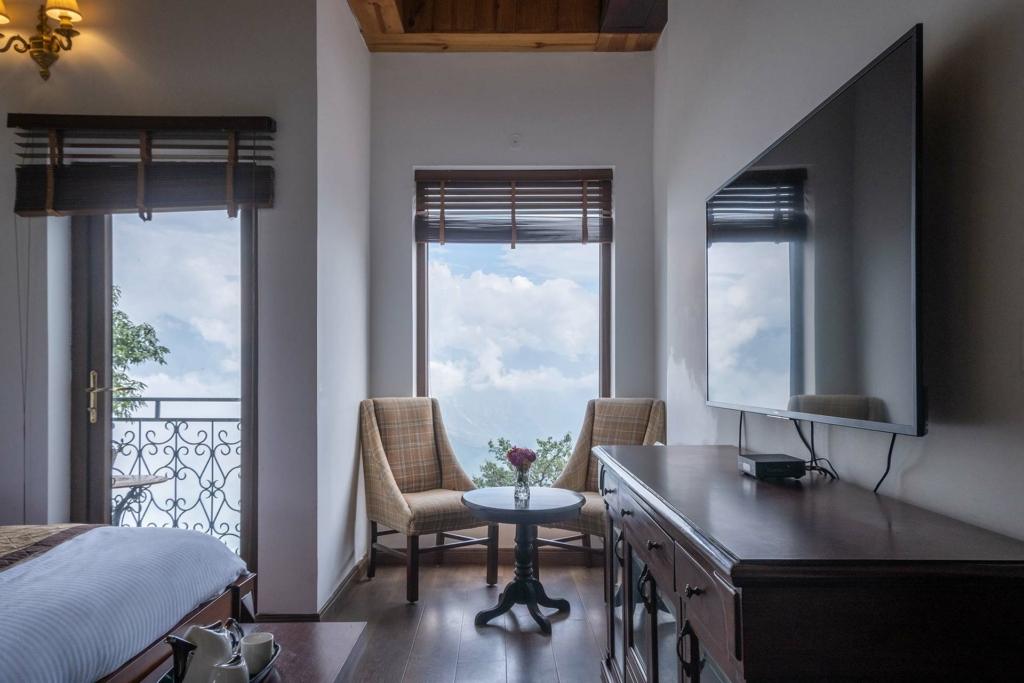
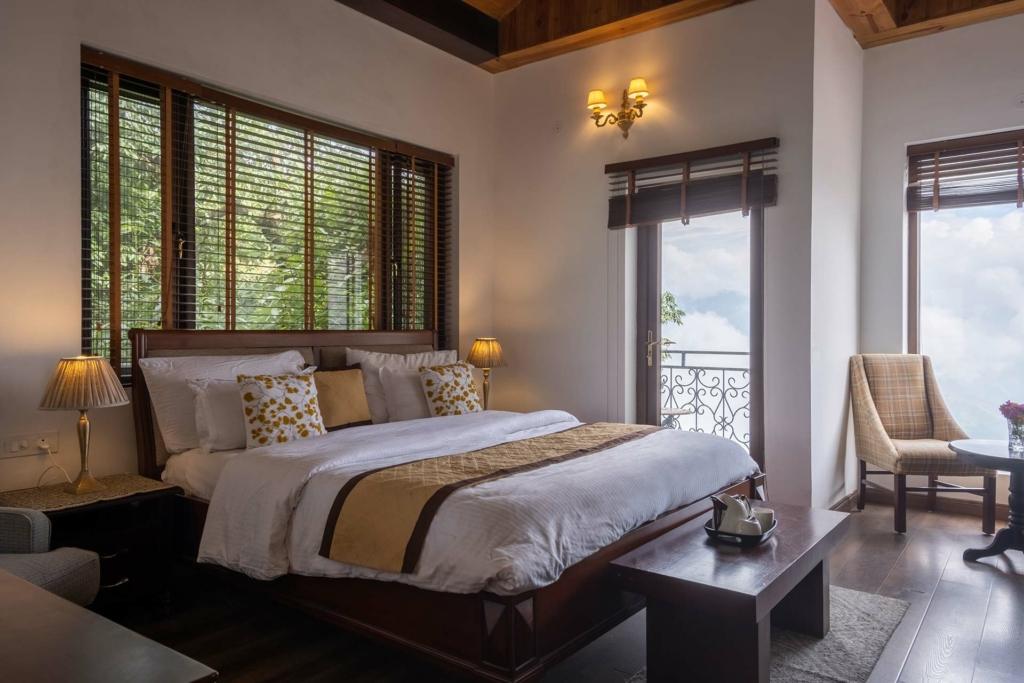
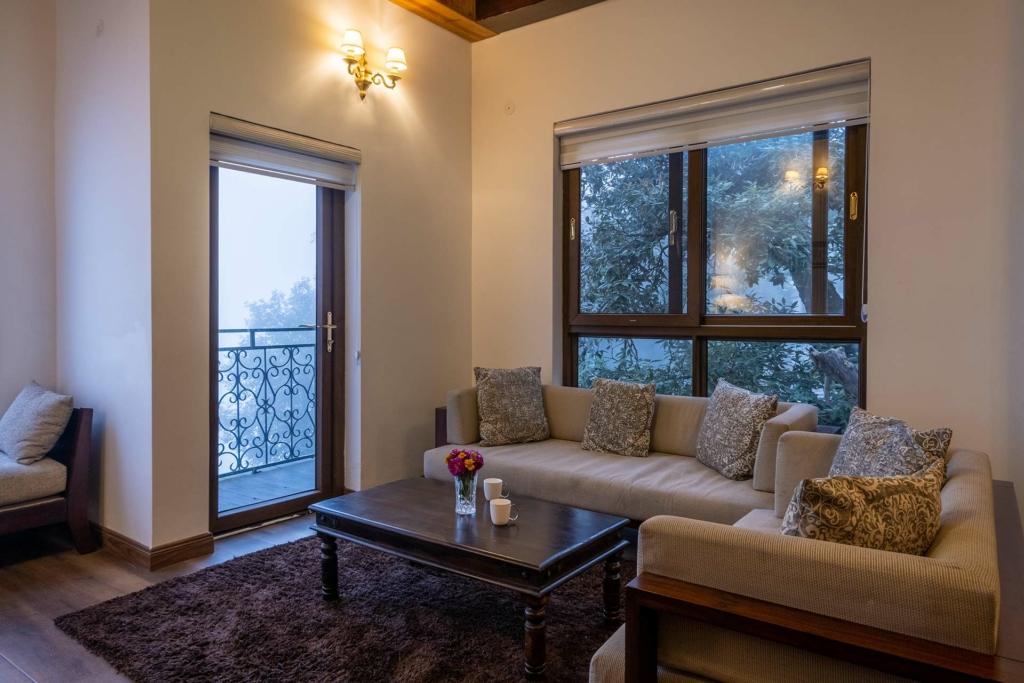
Every corner of Vikalp Cottage opens up to awe-inspiring views of Mussoorie. Ideal for explorers, this quaint hideaway is close to Bhattafall, Kempty Falls, and more. After a day of waterfall hopping and ropeway rides, return to your balcony to watch the sky melt into twilight.
Ember Home
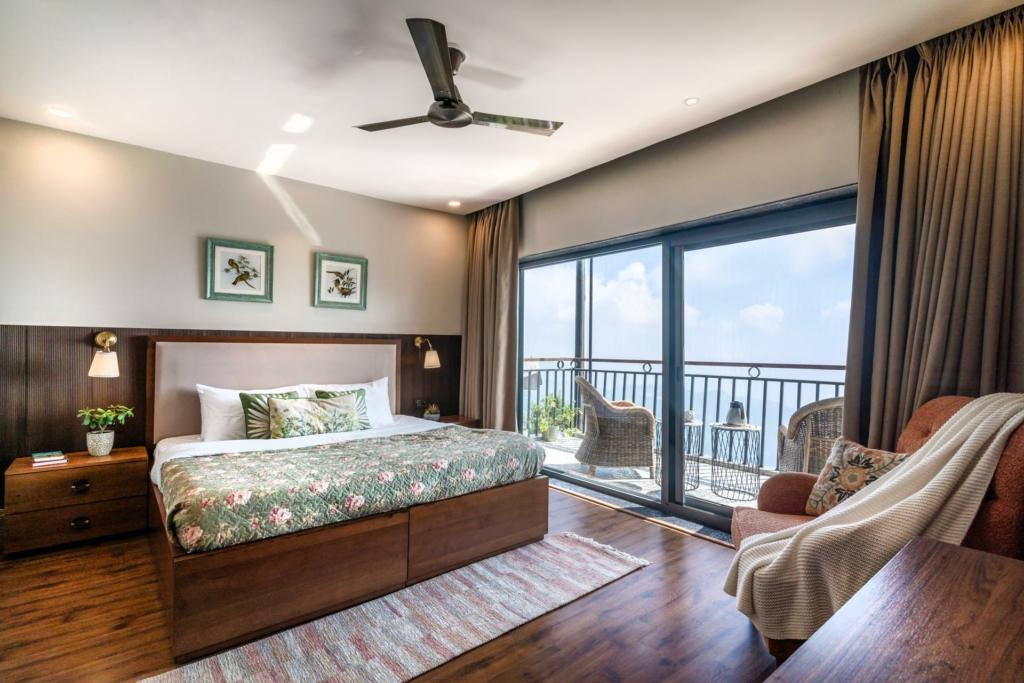
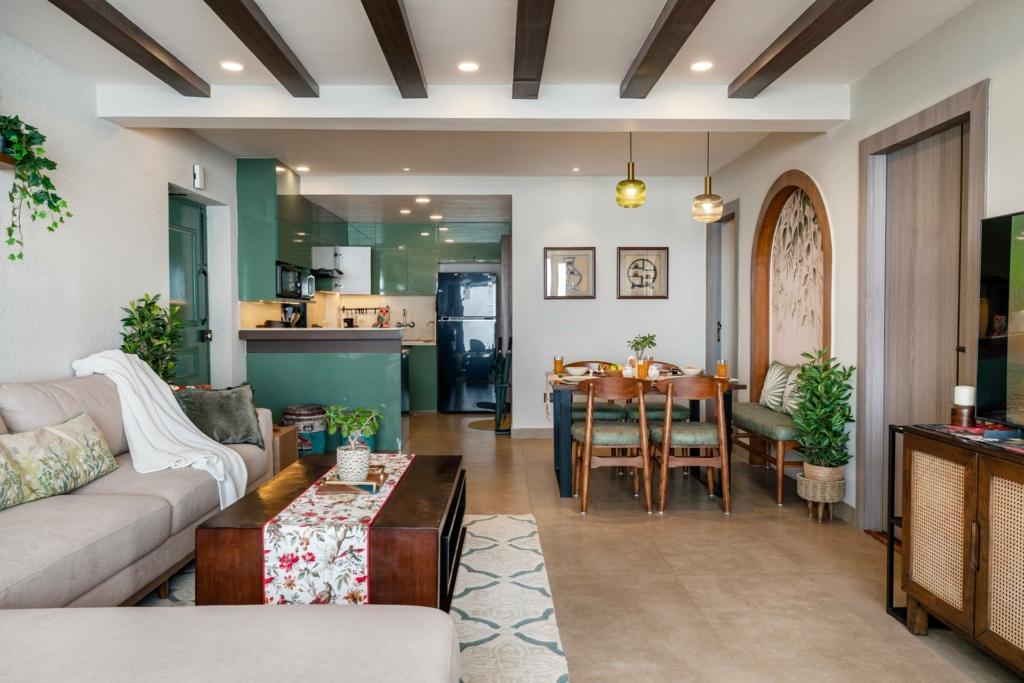
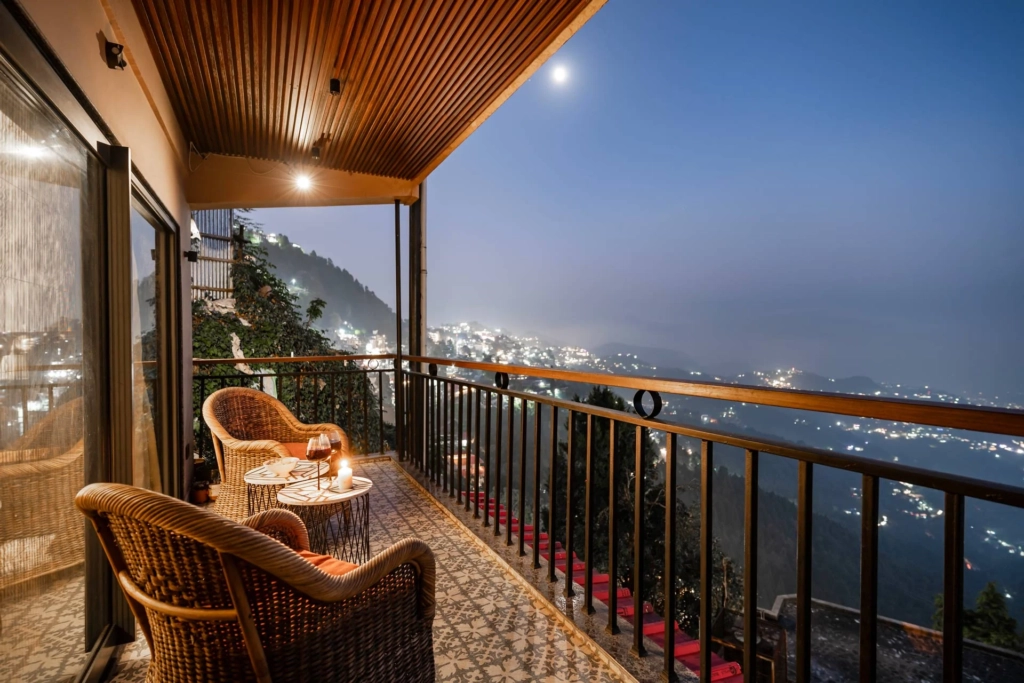
This boho-minimal 2-bedroom apartment is a peaceful nook in the heart of Mussoorie. Earthy, warm, and inviting, Ember Home is perfect for those who love slow mornings, calming interiors, and stunning hill views. A simple yet soulful stay that feels like a deep exhale.
Mountain Whispers
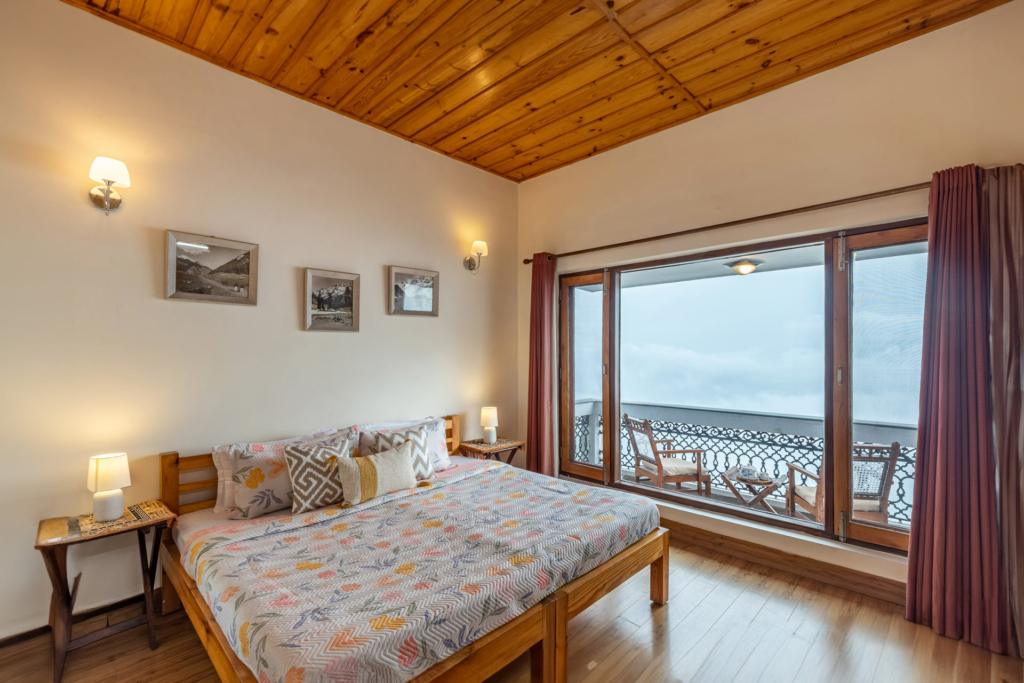
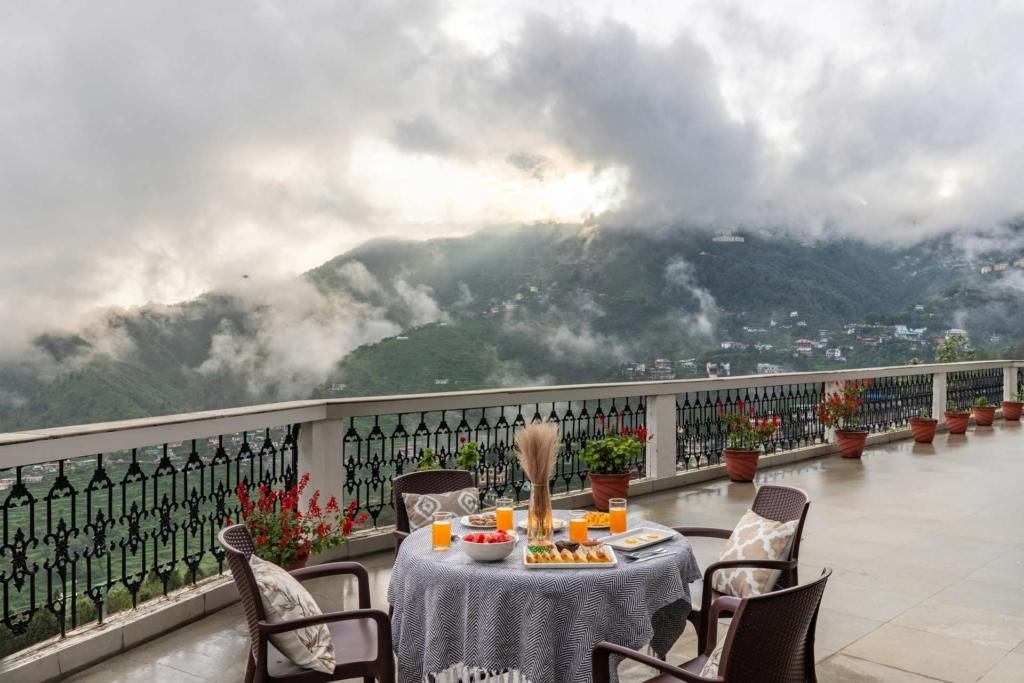
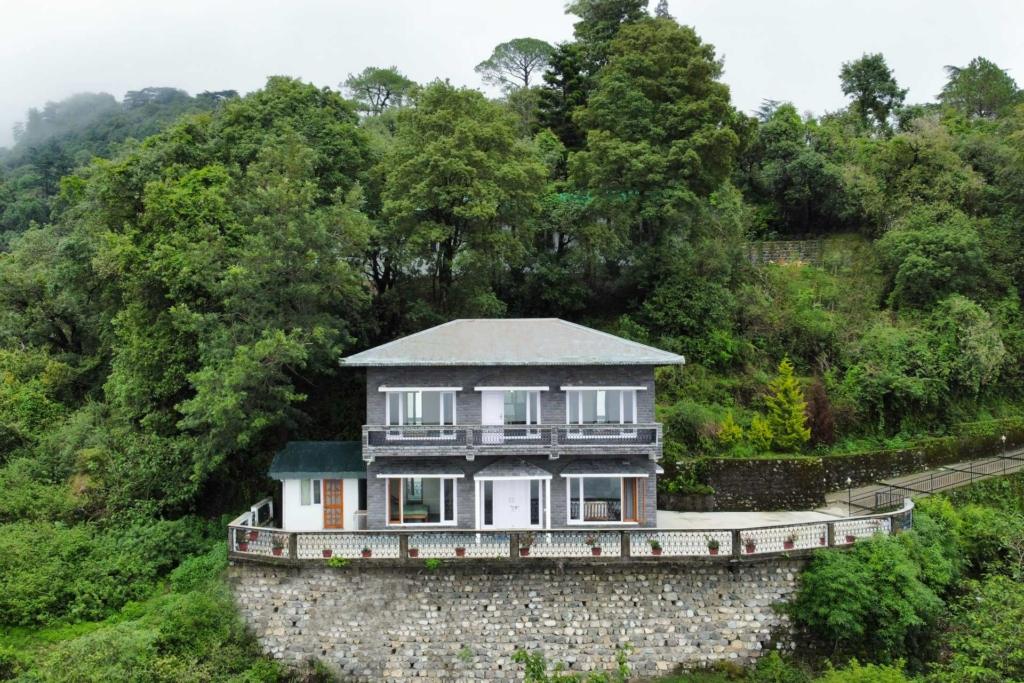
A 3-bedroom chalet tucked amidst the hills, Mountain Whispers is equal parts vintage charm and modern comfort. Each corner is Instagram-worthy, each view postcard-perfect. With nature trails, cosy reading spots, and a hearty breakfast, it’s a retreat made for recharging.
Cottage In The Clouds
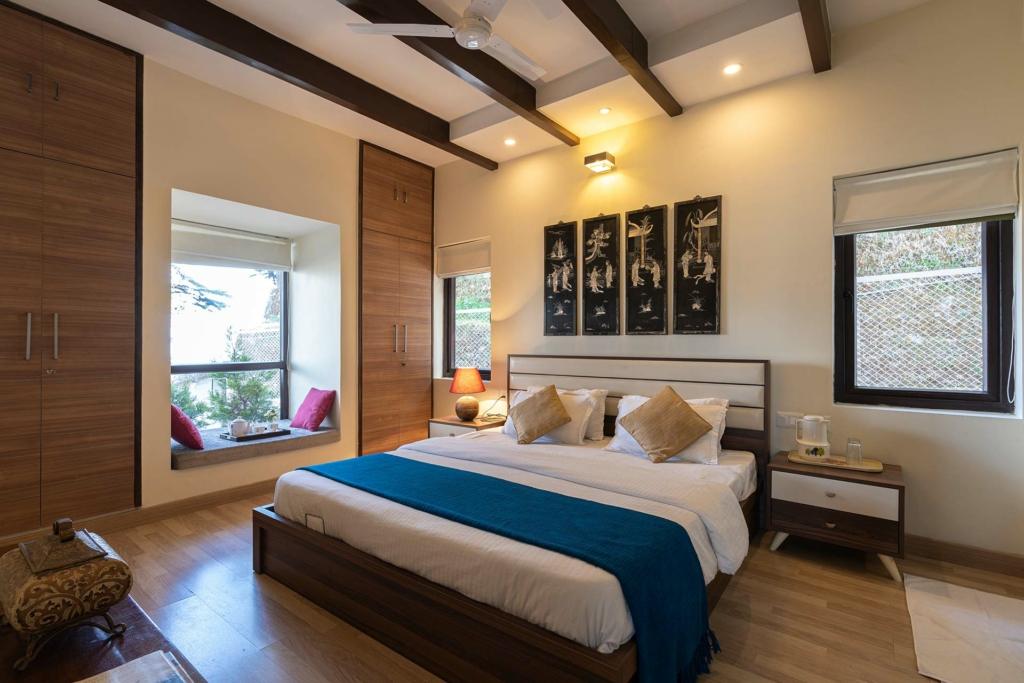
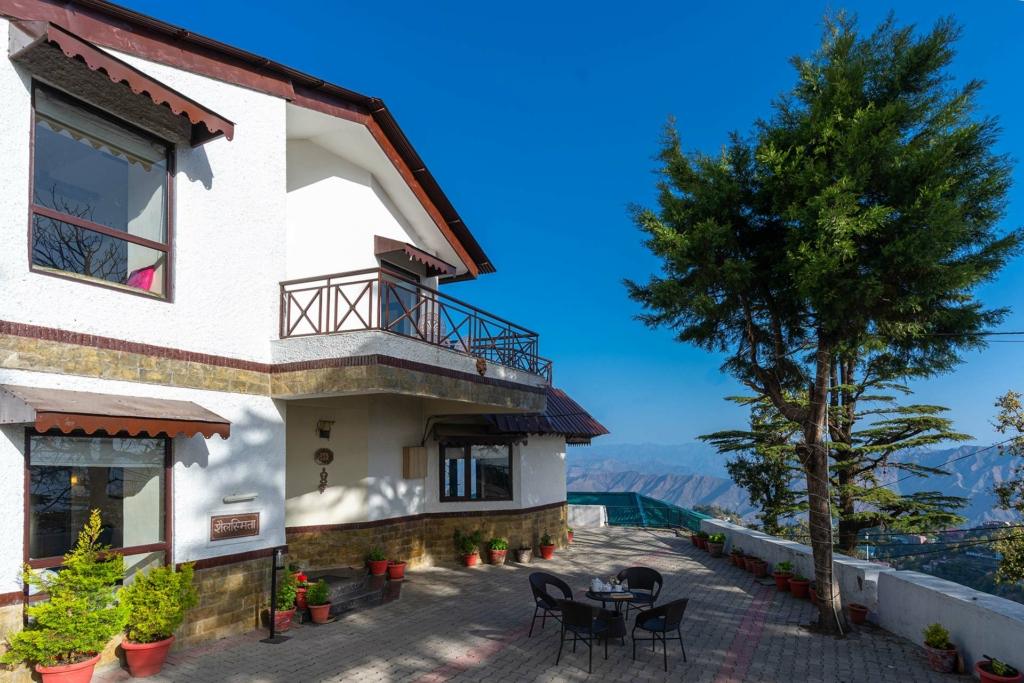
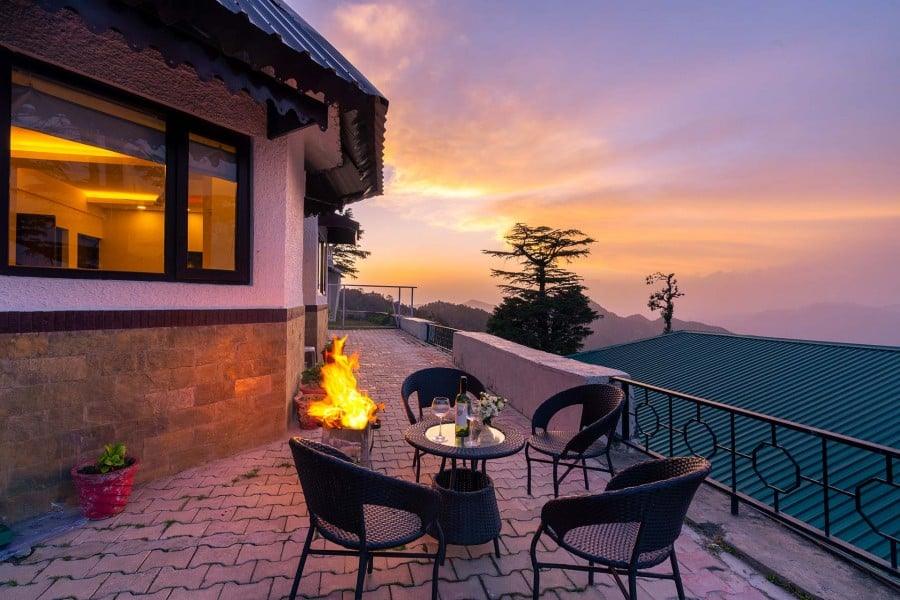
This delightful hilltop cottage is all about fun and comfort with double bedrooms, cheerful living spaces, and panoramic mountain views. Gather your gang, break out the board games, and enjoy the ever-changing skies. At Cottage in the Clouds, the views are endless and the memories unforgettable.
A Delhi to Mussoorie road trip isn’t just about getting from one place to another, it’s about everything in between. The joy of open roads, the roadside chai breaks, the sudden mountain views, and that moment when the air gets cooler and you know you’re close. Whether it’s the charm of Mall Road, the splash at Kempty Falls, or the calm of Lal Tibba, Mussoorie has a way of making you slow down and smile. Add a few detours to Rishikesh or Dehradun, and you’ve got a trip you’ll talk about for years. Go on, let the hills call you!
Frequently Asked Questions on Travelling from Delhi to Mussoorie
Mussoorie is well-connected by road, and you can easily take a Delhi to Mussoorie Volvo bus or a regular bus. Buses leave from ISBT Kashmiri Gate, Sarai Kale Khan, and Majnu Ka Tila, and drop you at Mussoorie Bus Stand near the town centre. The journey usually takes 8–9 hours.
Rishikesh to Mussoorie is about 66 km and takes around 2 hours by road. You can take two scenic routes; one is via Dehradun (NH7–SH34) and the other is via Narendra Nagar (NH7–SH12). Both offer hilly roads and lovely views.
The best time to visit Mussoorie is during summer (April to June) when the weather is cool and perfect for sightseeing. But if you love snow, December to February is ideal for a magical, wintery escape.
The Delhi to Mussoorie road conditions are generally good and well-maintained. You’ll be travelling via national highways with smooth routes, though it’s always wise to check traffic and weather updates before your journey.
The toll tax from Delhi to Mussoorie ranges between ₹500–₹600, depending on the route you take. Carry some cash or use FASTag for easy passage.
Cover Image Credits: Paul Hamilton via Wikimedia



